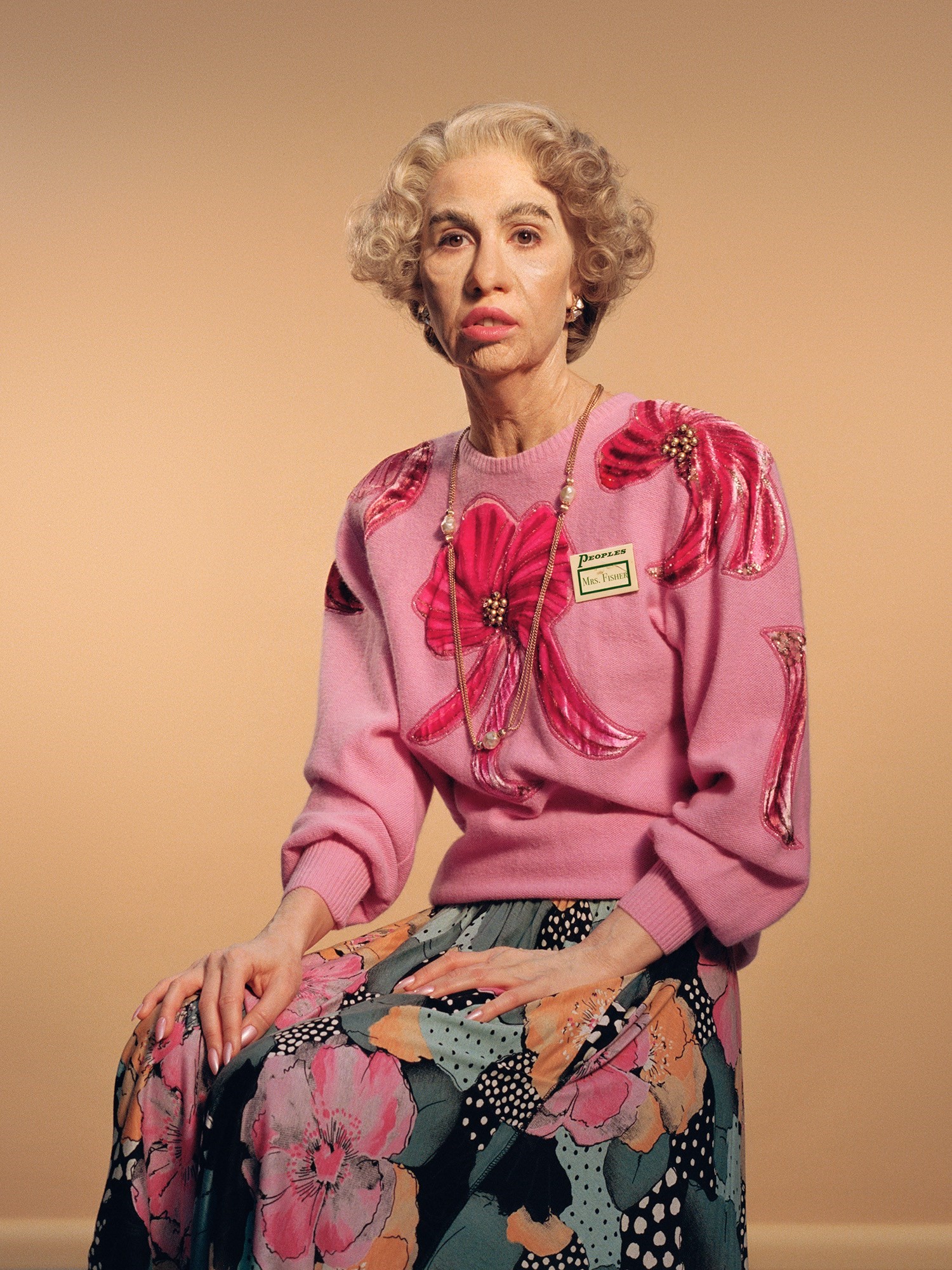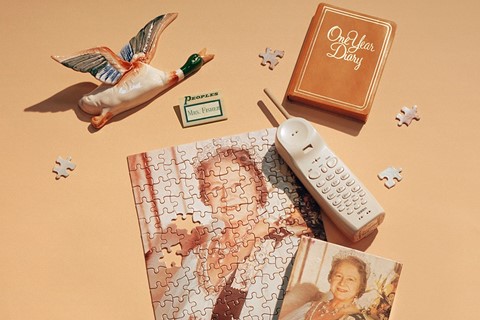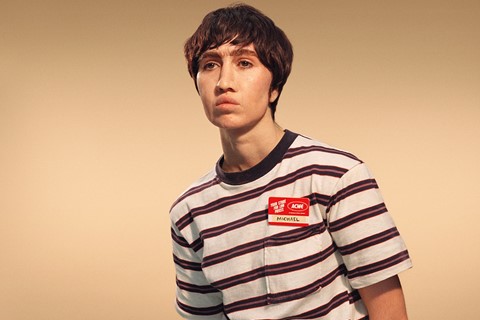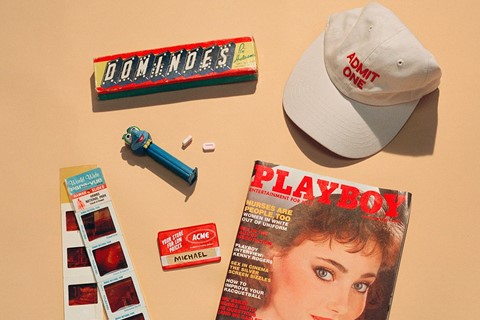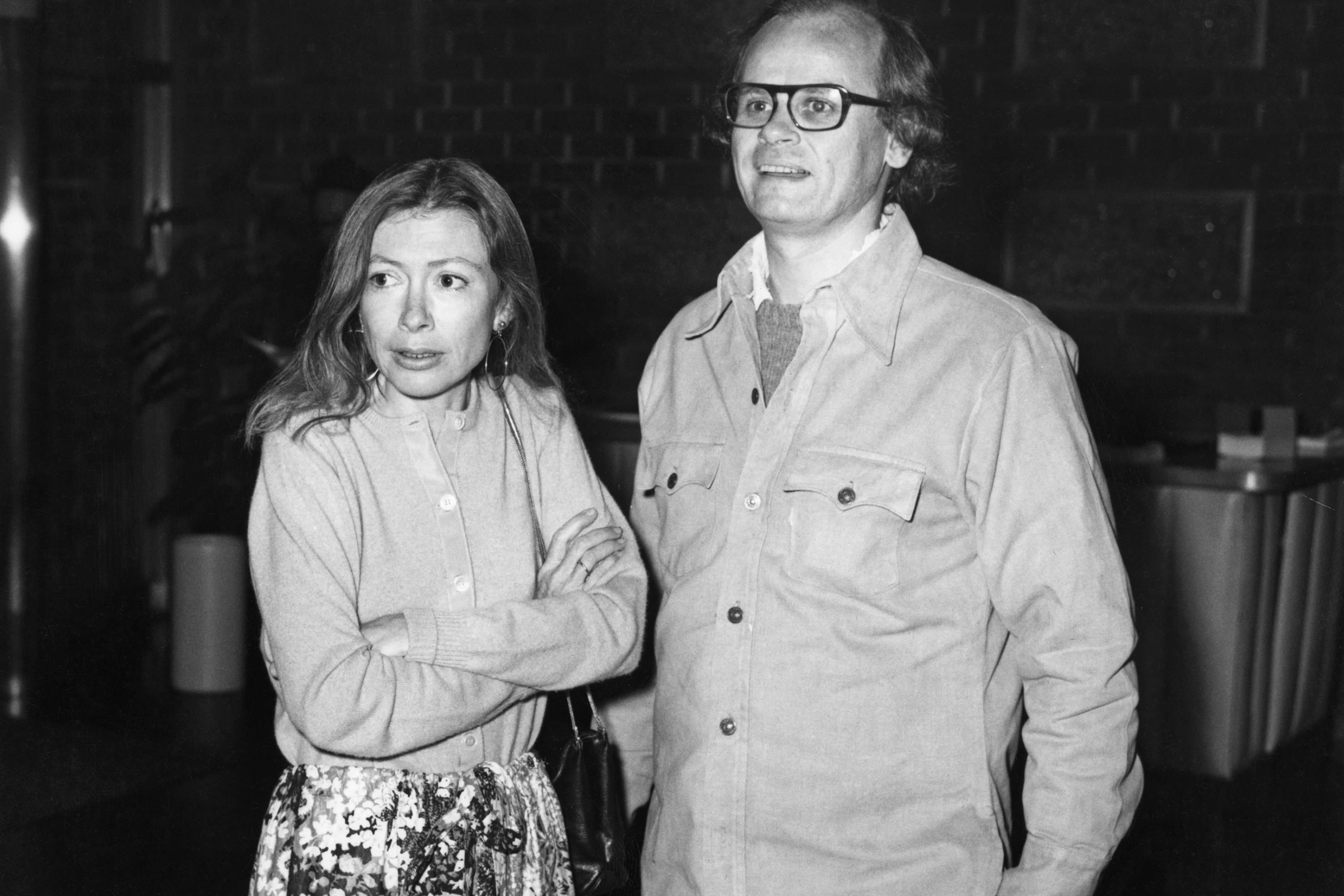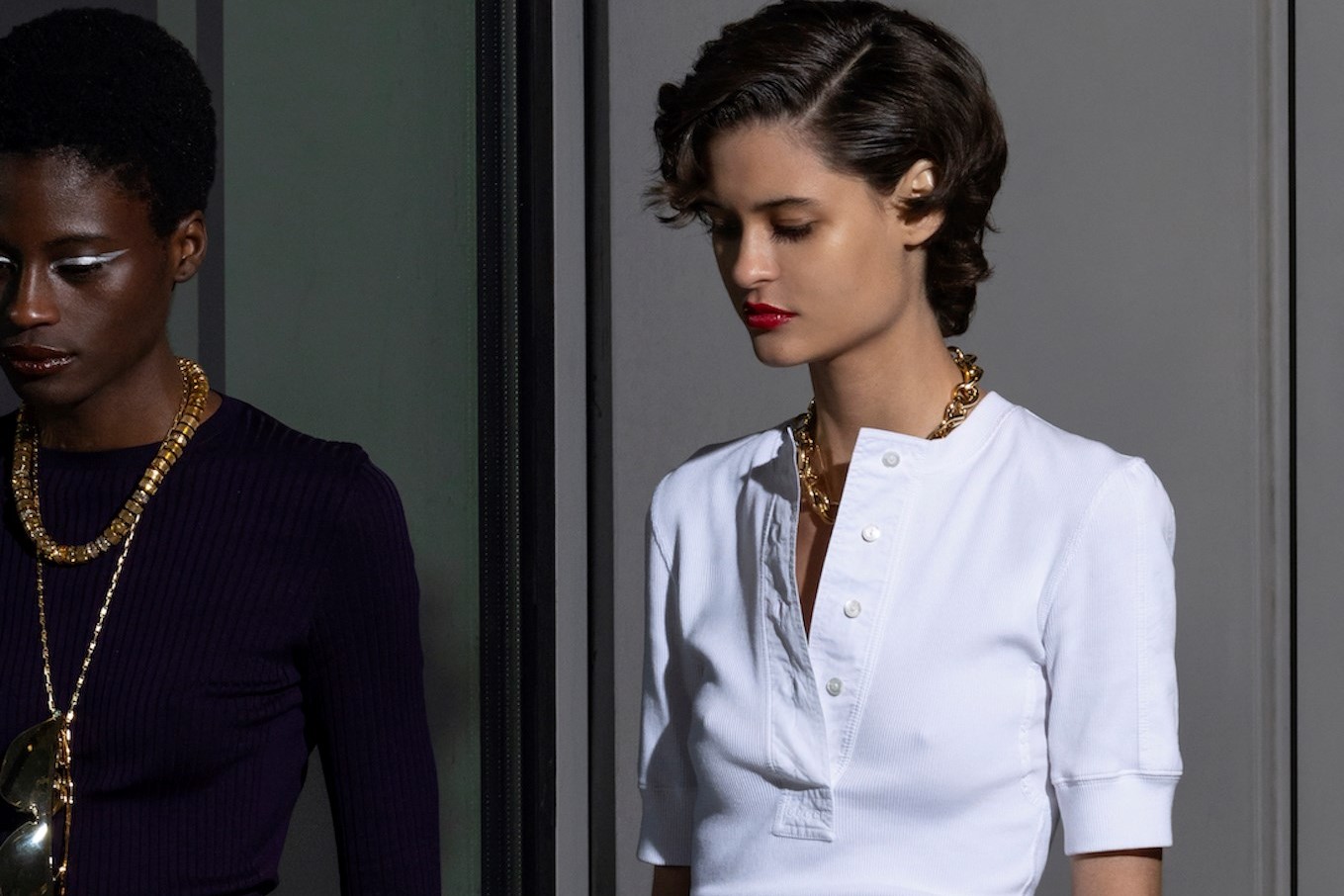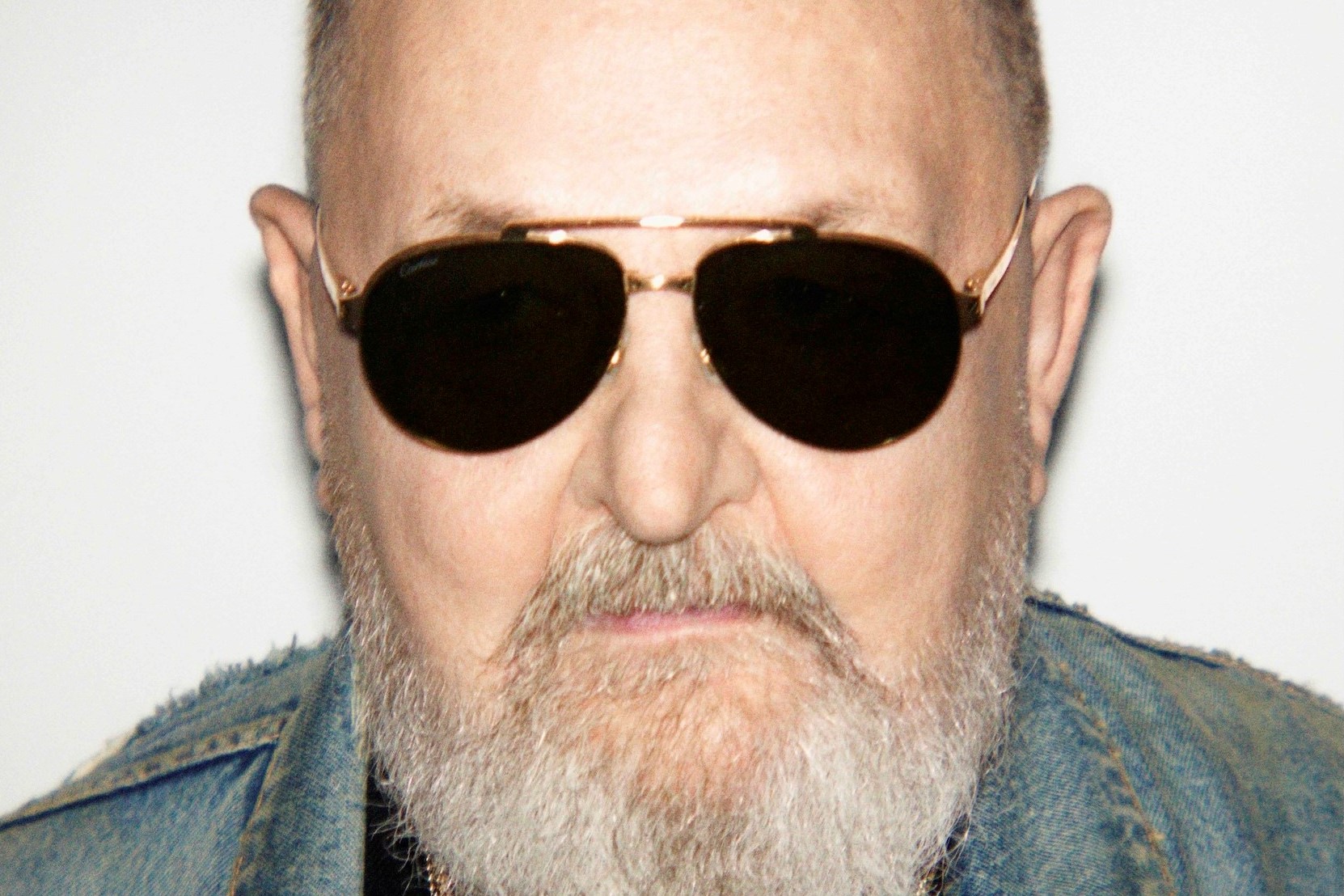Nadia Lee Cohen is surely one of the most exciting image-makers working today. Born in London but based now in Los Angeles, she released her first book Women last year – a staggering study of contemporary womanhood created over a period of six years. Published by Idea, bound in gold cloth and featuring 100 cinematic portraits, it was a groundbreaking debut. And now she’s back.
Today Cohen releases her second book, Hello My Name Is … , which, also published by Idea, sees the photographer transform into 33 different characters. Each one is inspired by name badges belonging to unknown individuals that she’s collected over the years. It’s a masterpiece not only of photography but of the process of transformation; of styling, hair, make-up and prosthetics. She even collected objects for each persona, making them into fully realised characters. There’s Jackie, the shaggy-haired Barbara Streisand fan; Mrs Fisher, the floral-festooned British royalist; and Jeff, the plush, portly and Nixon-supporting cowboy. Martin Parr and Paul Reubens AKA Pee-wee Herman have provided texts for the book, which is published in a limited edition of 1,000, just in time for Christmas.
Here, Cohen delves into the process of creating this publication and explains why she dedicated it to “the 99¢ store manager”.
Ted Stansfield: I’d love to start by talking about Los Angeles, where you live. What is your relationship to the city? And how did your fantasy of it compare to the reality when you first arrived?
Nadia Lee Cohen: I still feel like a spectator even though I’ve been in Los Angeles for over five years. I hope I always view it like that. Before I came here I had that British naivety towards Hollywood and assumed it was a very glamorous place filled with palm trees, movie execs and Lindsey Lohans. I drove to Hollywood Boulevard on one of my first nights, in a car I had bought for $800 (which turned out to be the body of a BMW with the engine of a Nissan – very apt for what I am about to describe) and was so excited to see the Walk of Fame in the flesh. I remember asking someone if I was actually in Hollywood and they told me to fuck off. I had arrived to discover bad lookalikes, filthy streets and gawping tourists. On the sad side there was also homelessness, chronic mental illness and prostitution, all lit up and sparkling with the neon lights of Hollywood; the fairground of American decay on parade and no sign of Lindsey Lohan. The discovery of this underbelly might not sound all that appealing; and even though it wasn’t what I expected, it turned out to be the reason I love Los Angeles and why it became a sort of dysfunctional muse.
TS: Los Angeles is inextricably tied to ideas of identity and transformation – both in the way that people move there, wanting to become movie stars, and in the way that movie stars themselves very literally transform themselves into other people. What is your own experience of the city in this respect and how has it shaped your photographic practice?
NLC: This is hard to explain but to me Los Angeles often doesn’t feel like a real place with real people – even the palm trees aren’t actually real, they were brought there to look pretty. You often have to figure out whether the person you’ve just met really does what it says on the business card they shoved in your hand or whether they are just a marvellous bullshitter. It’s the cliche of the entire population trying to ‘make it’ which is very different to the small towns in the UK, where most people are quite content to stay sometimes for their entire lives. It takes guts to go in search of your dreams but sadly it often doesn’t work out, which leaves this feeling of hope-fuelled desperation. This causes Uber drivers to keep their acting cards stashed in the back of the seat on display just in case they get lucky and pick up Paul Thomas Anderson. LA is also lit really nicely without trying, the way the sun comes through the smog in the daytime or the tungsten street lamps at night. This often makes it feel like one giant movie set with a cast of eccentric inhabitants.

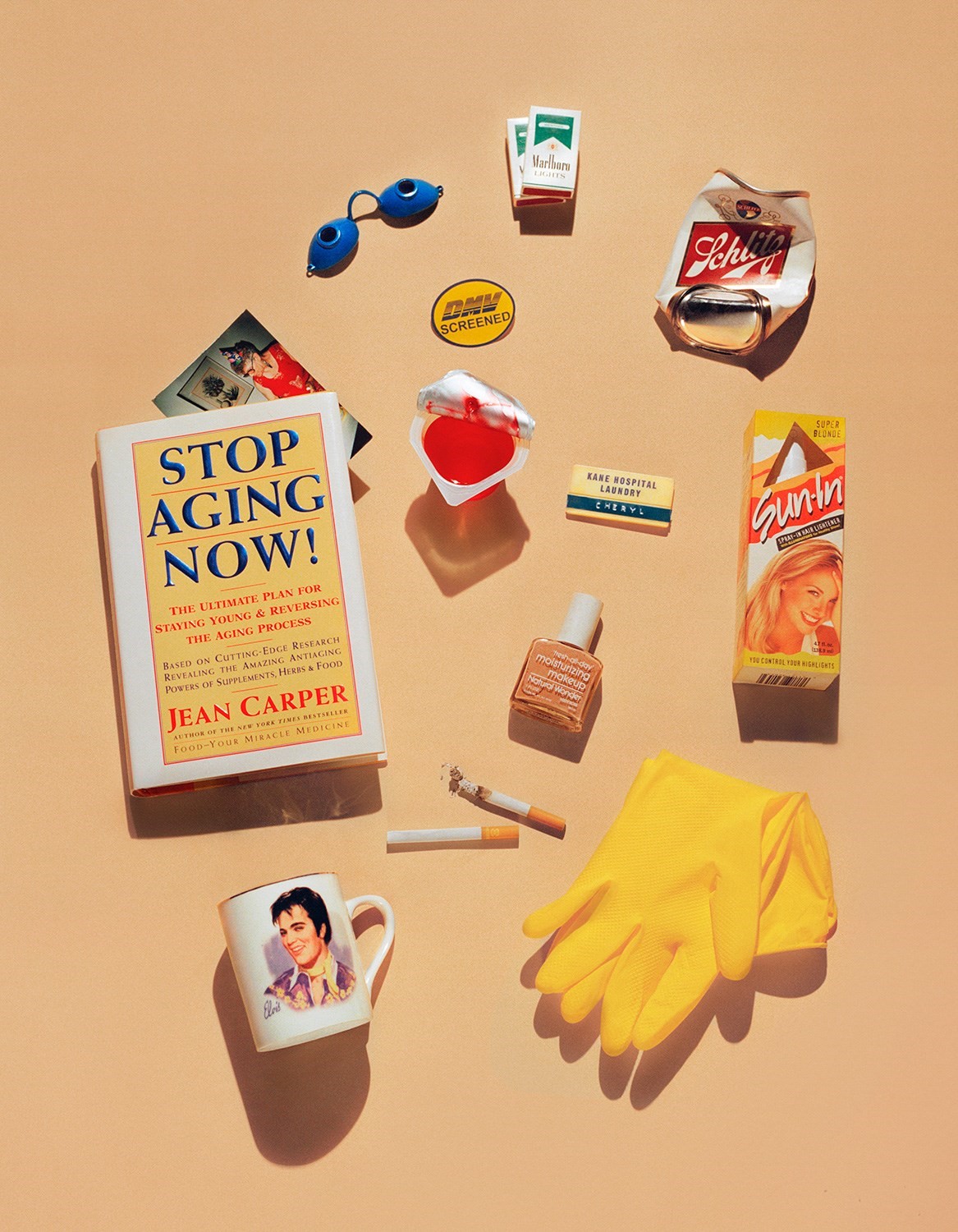
TS: These themes of identity and transformation are found throughout your new book, Hello My Name Is … . Please can you introduce this publication?
NLC: Yes, it’s a collection of 33 portraits, 33 still lives and 33 films of made-up characters that were imagined from a large personal collection of name tags.
TS: How does it relate to Women, your book which you released around this time last year?
NLC: Well it wasn’t supposed to follow so soon after, but I figured I couldn’t let it drag out for six years like Women. Hello My Name Is … was photographed over the course of a year, but I had been slowly gathering the props for around five. It is closely related to Women and probably most of my other work in terms of character and story, but visually it’s quite different. There are no sets or environments for these people to exist in, though the props are supposed to suggest a life-lead. It was intentionally stripped back in order to spotlight the person and their belongings, hinting at their narrative rather than spelling it out.
TS: What were the origins of this new project? I understand it began with some name badges belonging to unknown individuals that you had collected.
NLC: A teenage boy at a drive-through gave me their In-N-Out badge because his name was Jesus and it happened to be Easter, which I thought was pretty amazing. I’ve actually lost that badge now but the point is that’s what started the collection. I’d then pick them up at charity shops and flea markets until I had quite a big collection that I didn’t really know what to do with. Until I decided to start this project.
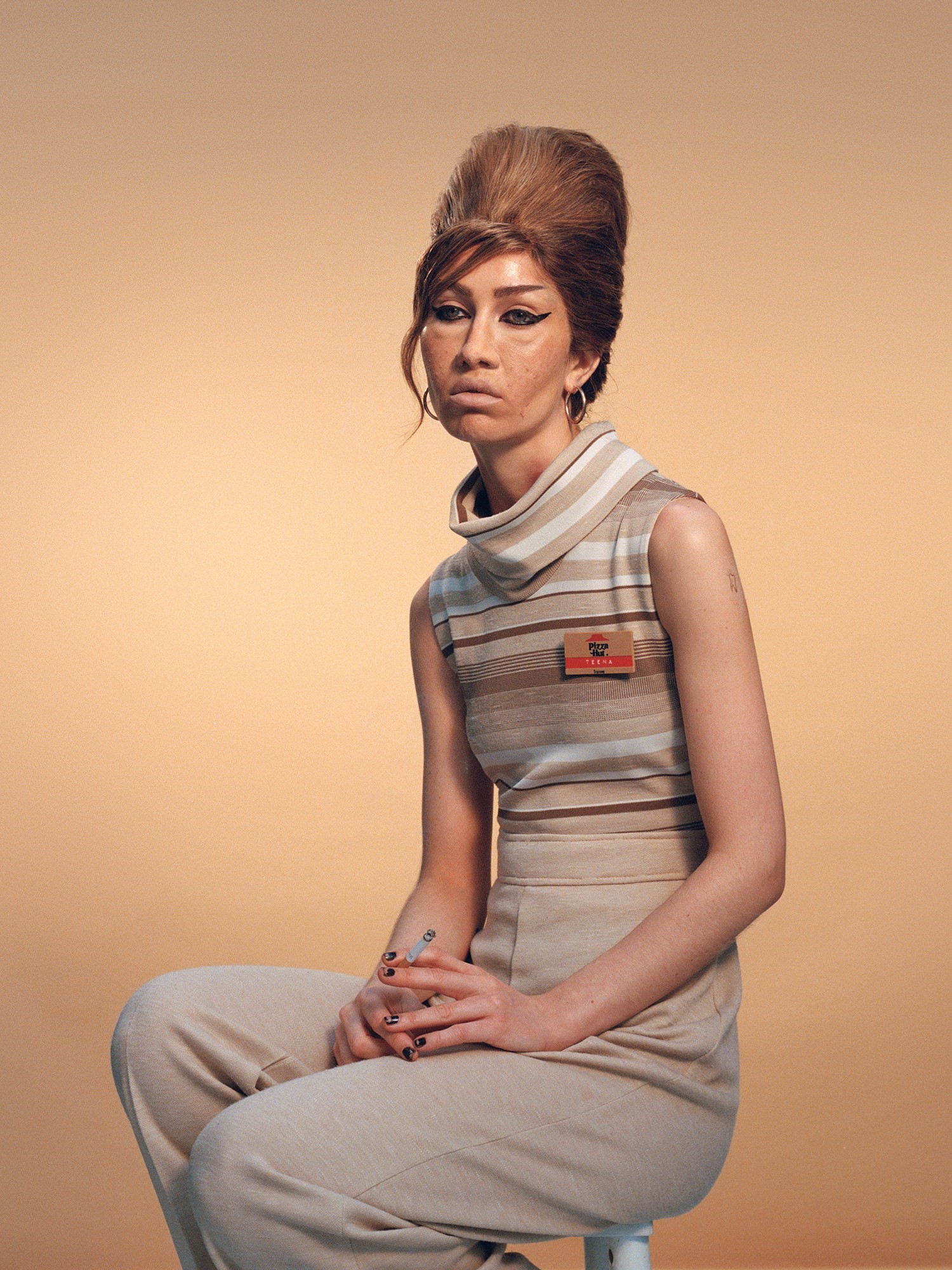
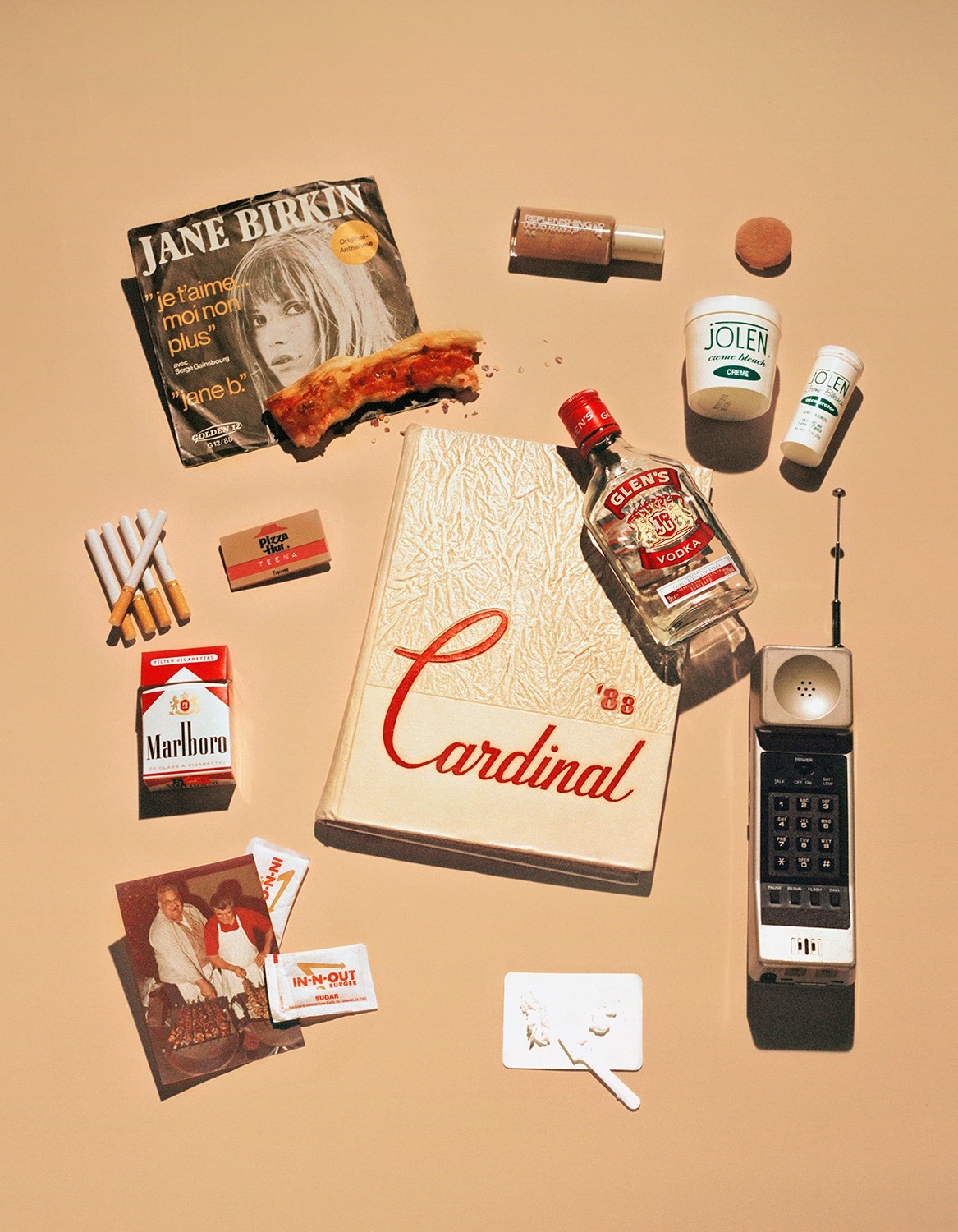
TS: Can you tell me about the actual process of creating these images, from imagining the characters to transforming yourself into them and taking the photographs?
NLC: I really, really love everyday objects and nosing around charity shops and flea markets. On one of these visits I came across a ceramic loo roll holder that had “Toilet Roll” written on top in swirly writing. I thought this obviously once belonged to someone like Julie; I bought it immediately and so it began. I’d think “oh yes that ‘South Wexford Ordnance Survey Map’ was absolutely Terry’s, he probably went there on business. Before I knew it I had accumulated lots of treasures such as a miniature puzzle of the Queen Mother and a 1991 air freshener called “Fresh Hell”. Every object I found could relate back to one of the name tags and this began building the person until I just knew what they looked like. I would describe this to the wig designer, prosthetics artist, stylist, make-up artist and nail artist, and together we worked to make them come to life. It was really important that they looked like real people, so we would have conversations about whether they had a perm, rosacea or bitten fingernails to make sure there was attention paid to the smaller details. It was a very close family atmosphere on set, there weren't very many of us – I was usually in the make-up chair with Malina (SFX make-up) for hours for the more complex characters, so Britt (the prop stylist) would have loads of time with the objects to arrange the still life. When I was finally ready we would all perk up and I’d get a burst of energy and do a little dance.
TS: Do you have a favourite image or character?
NLC: I like the image of Jackie very much, she has a softness to her and almost looks majestic. My favourite character is Jeff; I was sad to take him off.
TS: Several artists have explored ideas of identity and transformation before in their work. I’m curious to know what aspects of these themes you were keen to explore?
NLC: The people were formed from an object and I think I treated the creation of them similarly to coming up with characters for a film without the intention of actually making it. They are bits of people I have seen on game shows, at checkouts, bus stops, cafes, my own friends and family members and even parts of myself. I don’t think I ever set out to explore any themes but I imagine some may be extracted.
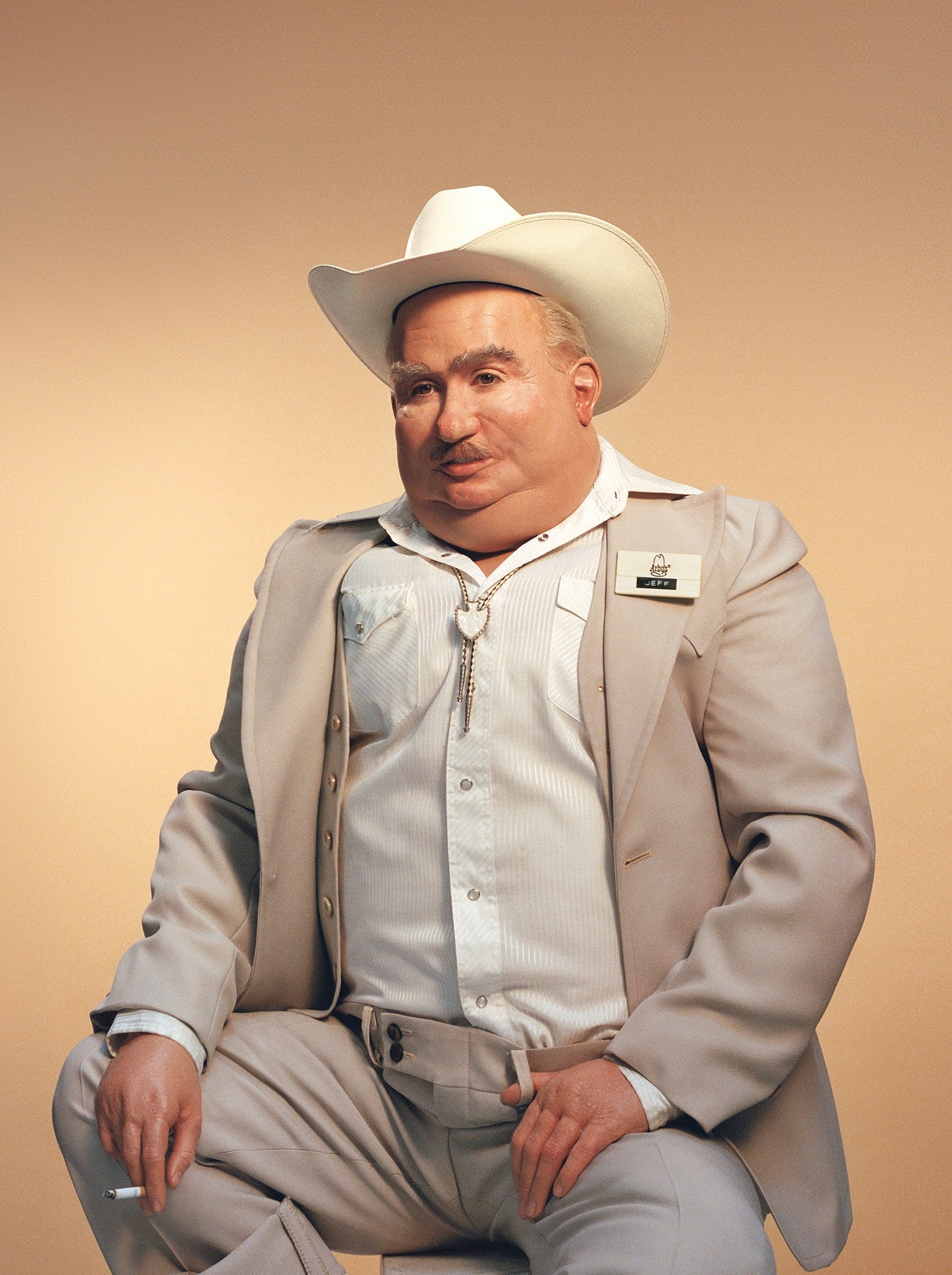
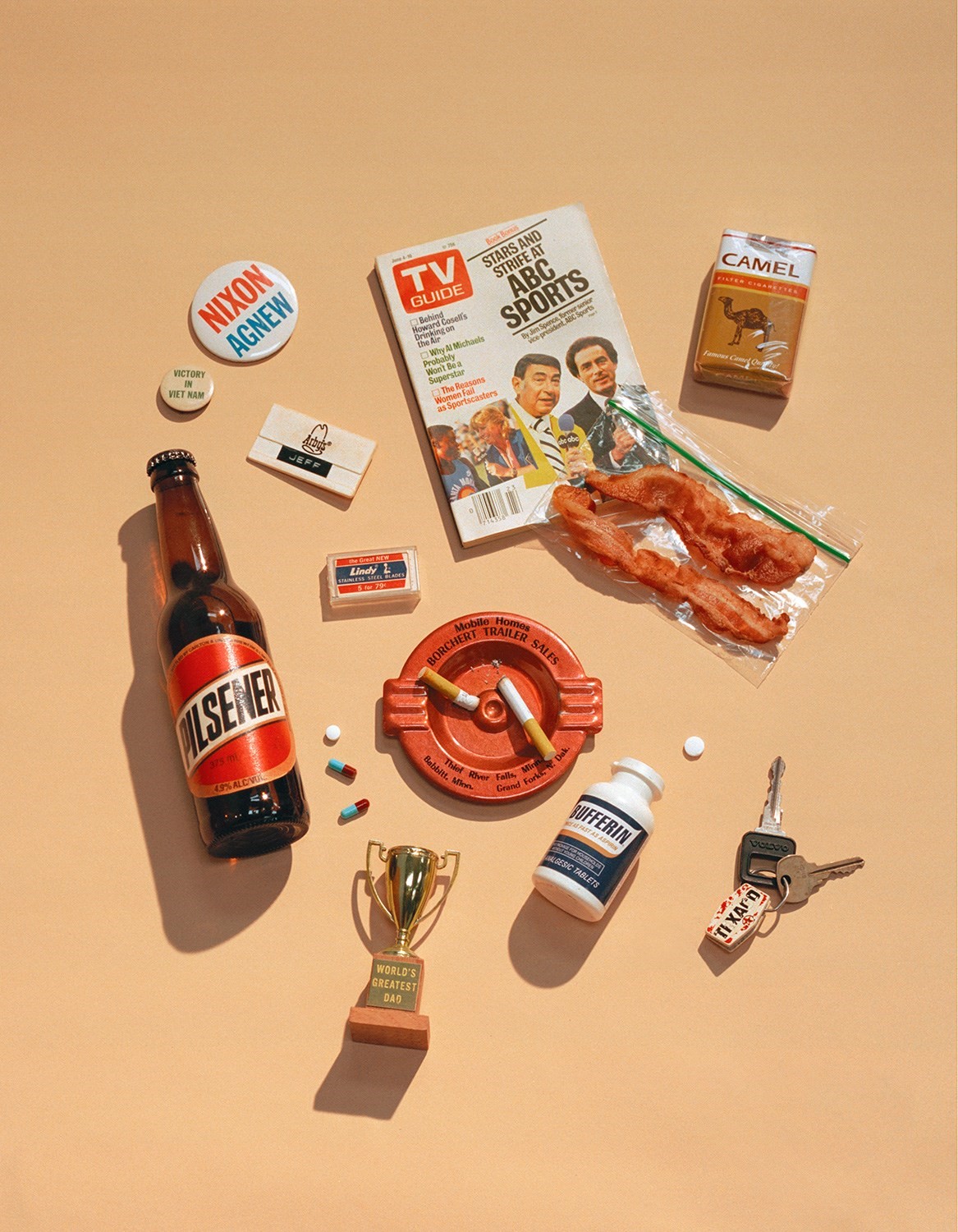
TS: How do you understand your own identity? Did the process of transforming yourself into different characters change the way you think about or perceive yourself?
NLC: It didn’t necessarily change the way I think about myself, I’ve always been this way. What it did do was make me happy that I finally did something with the tags and objects and that these characters now exist somewhere other than inside my head.
TS: I love that you dedicated the book to “the 99¢ store manager”, saying “I buy things I don’t need just to see how you’ve done your hair.” Can you tell me the story behind this?
NLC: Yes, she runs the local 99c store and she does great things with her hair. You never really know what you’re going to get; it could be up with bits sticking out of the bun like a firework, it could be down with the fringe individually gelled into perfect spikes, or it could even be curled into pageant-worthy ringlets. You’ll just never know unless you go and see for yourself.
TS: Finally, you conclude the book with some Polaroids which pull back the curtain on the process. Why did you decide to do this?
NLC: We had so much down time in between characters that we’d just snap away at anything that seemed interesting or was making us laugh. There was no intention of these ending up in the book but they do look nice, don’t you think?
Hello My Name Is … by Nadia Lee Cohen is available from today at Dover Street Markets worldwide and online at Idea.
